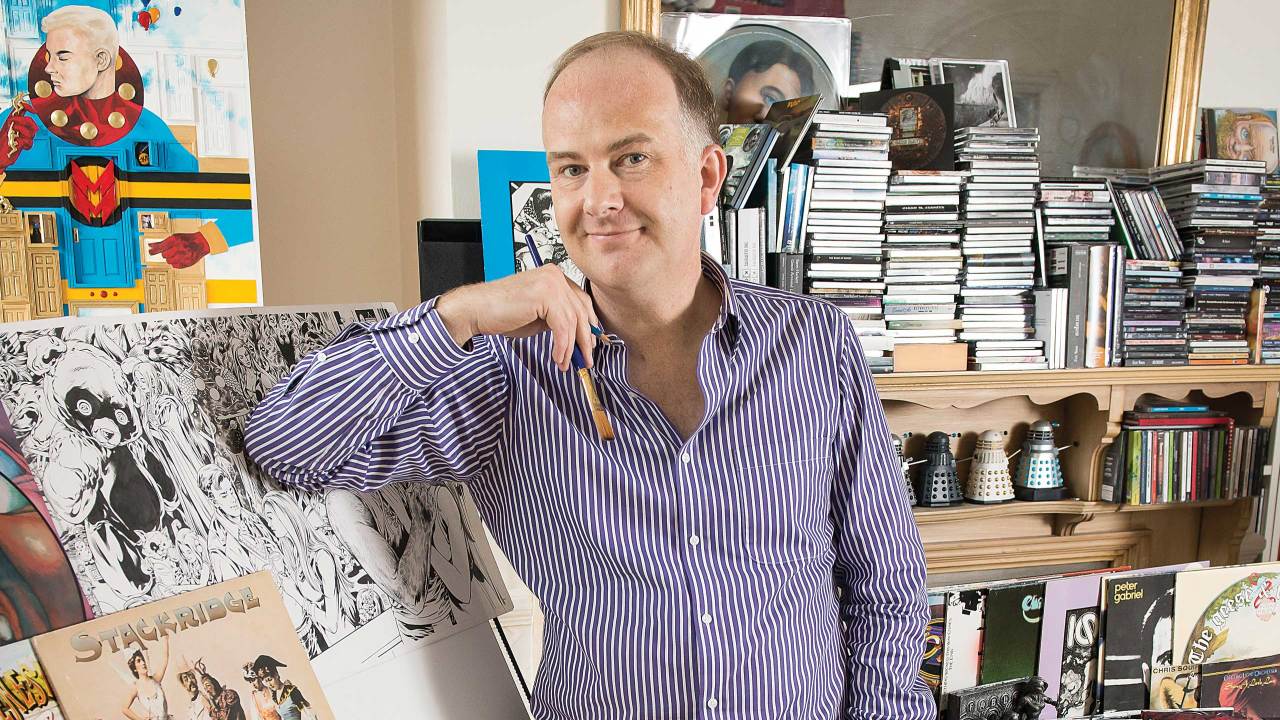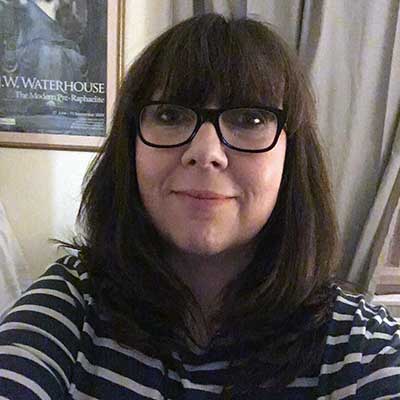Before Mark Buckingham found his calling as a comic book artist and writer, he’d wanted to work in animation. Regardless, all his creative work has been done to a backdrop of prog music, as he explained in 2015.
“I was born in ’66 so I was a bit too young for when prog was flourishing. The first record ever bought for me was by The Wombles. It was the Mike Batt arrangements, and the variety of sounds he used that really appealed to me – or maybe I just really liked The Wombles!
I got into ELO next and the very first single I bought was Shine A Little Love, from Discovery. As is common with most artists who also like prog, the imagery is as much of an attraction as the sound itself. With ELO I found that.
The first proper prog band that I really embraced was Genesis. Abacab was my first album. It was mainstream, but what intrigued me was the more curious stuff – Dodo/Lurker, Who Dunnit? and the imagery of Keep It Dark, that idea of the alien abduction. What really got me was storytelling. I read comics and a lot of books and fantasy; I liked Doctor Who and science fiction shows… for me, this music was part of the same mush of stuff that excited me and got my imagination reeling.
Once I found Genesis I was on to King Crimson and Yes. I loved Yes for Jon Anderson’s bonkers lyrics, but also for Chris Squire’s bass. Close To The Edge resonated with me; And You and I, and especially Siberian Khatru. It was almost poetry to music – magical and quite angelic, and it sort of pours light on the soul.
The first King Crimson album I bought was A Young Person’s Guide…. then I bought In The Wake Of Poseidon and In the Court Of The Crimson King. I really liked the Discipline line-up too. At that point, where I’d acquired everything I possibly could from the back catalogue, DGM started releasing all the Crimson club recordings, and I voraciously hoovered up all of those as well.
Because they always mix things up and try different stuff, you can have a box set of 20 performances and there’s something fresh in each one – I love that. It’s head music: it’s something that requires attention. The quality of the musicianship always amazes me.
In the early 80s I read a two-part feature in Kerrang! about prog in the 70s, with new bands to follow too, spearheaded by Marillion, with Twelfth Night, IQ, Pendragon and others. Genesis had been my first gig, in 1982, and they were my primary focus for listening. But what really excited me was that these new bands were my generation. Bristol was my nearest city and suddenly I had all of these gigs available to me. That’s how I got to see IQ a lot and sort of make friends with Pete Nicholls [vocals] and Martin Orford [keys].
When I heard Disappeared from Christina Booth’s solo album The Light, it absolutely broke my heart
I’d always been into art. Aged 4 I got quite sick and my parents gave me crayons, pencils, paper, clay to model with and some comics to read. That combination and being shut away for months set out my life’s path. By the 80s I knew I wanted to illustrate. I remember picking up the single of Marillion’s Market Square Heroes and the Mark Wilkinson illustration got to me as much as the music. So I started doing illustrations for some bands for demo tapes and things.
I did a lot of illustration work for a fanzine called A Fascination, which got me into loads more new smaller bands like LaHost, Airbridge and Twice Bitten. At this point I was also very fond of The Enid, and Something Wicked This Way Comes. Imagery then was a lot darker as these were bands living through the Thatcher years, although some of the new wave were embracing that old approach, so you’d have Pallas with their Patrick Woodroffe Sentinel covers.
But behind The Enid was whimsy, and being a West Country boy, one of my one of my favourite bands is Stackridge. I discovered them through meeting [bassist/vocalist] James Warren – we had a mutual friend and we got chatting at a party. I remembered the name, checked them out and realised, ‘Oh my God, this stuff is amazing.’
One of the things I like is that they make references to streets and towns I know. They do Purple Spaceships Over Yatton – I lived five miles from there. When you listen to Mr. Mick, they’re talking about the bells of St Mary’s. I know these places; I can walk with them. They also write a lot of songs about animals – very useful for when I’m working on those kinds of subjects.
I was technical assistant, doing ancillary stuff like cleaning models and making the little white sperm
With new prog I’m spoilt for choice – Matt Stevens, The Tangent, Neal Morse, Clive Nolan – but I need to mention Magenta. I found them via Malcolm Parker’s GFT mail order company, which I would buy a ton of stuff from. There are hints of Yes in there but what’s special is the combination of the three key players: Rob Reed, Chris Fry and Christina Booth.
Christina is an angel, the sweetest woman I’ve ever met, and she also has an incredible voice but is so humble about her talent – just like David Longdon from Big Big Train. When I heard Disappeared from her solo album The Light for the first time, it absolutely broke my heart. I could listen to her sing all day, and frequently do.
I’ve been lucky enough to meet some of my heroes; but Peter Gabriel was the first prog superstar I met, through working at Aardman Animations. I’d just finished my foundation course, aged about 18, and I went in to see my art teacher from comprehensive school just as she was arranging a visit to Aardman to fix up work experience. So I went along with a carrier bag very sensibly stuffed full of my artwork and model making, and I jumped at the opportunity just before we left to show it to [co-founder] Peter Lord.
I got a phone call a few days later asking me to do a bit of work experience for a week, and it turned into several months. Eventually I had to leave and get on with my design degree, but they always kept in touch, and knew I was a big prog fan.
Lo and behold, a few months later I’m being called in to spend a week working on the film for Sledgehammer. I was technical assistant, doing ancillary stuff like cleaning models and making the little white sperm – but I was also Peter’s stunt double. They would paint railway tracks around me, or stick me in contraptions to make sure he wouldn’t get decapitated, then he’d come in.
It was quite daunting to have someone that I admired so much sitting a couple of feet away all week long. I took my albums in and he was very sweet and signed them all for me. I really thought animation would be my career – then I made the mistake of falling in with a bunch of reprobates that made comic books instead…”

